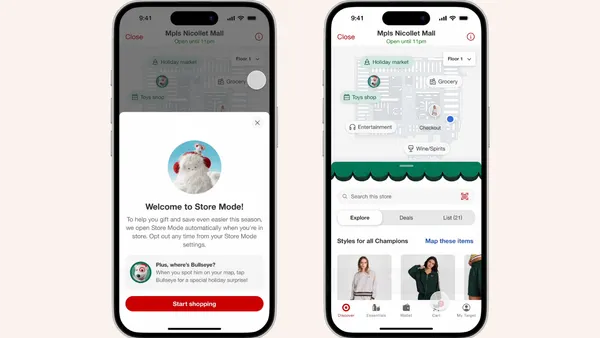Dive Brief:
- The lion’s share of consumers — 88% — report satisfaction with human-led digital customer service interactions, compared with 60% who report satisfaction with AI-only interactions, according to a survey conducted by Longitude on behalf of Verizon Business.
- While brands are deploying AI across CX operations, customer support came out on top with three-quarters of executives investing in this use case, according to the June survey of 5,000 consumers and 500 executives across seven countries.
- “AI is most effective when human agents can use it as a ‘sixth sense’ or as an ‘angel on the shoulder,’” Daniel Lawson, SVP of global solutions and IoT at Verizon Business, said via email. “AI can provide agents with real-time data that can help them answer customers' queries more quickly and accurately than they could on their own.”
Dive Insight:
The partnership between people and AI is at its best when the technology directly empowers agents to focus on supporting customers, according to Julie Geller, principal research director at Info-Tech Research Group.
“It should arrive with the same context a seasoned agent has, including customer history, open orders, entitlements, and risk factors, and use that knowledge to lift the administrative burden,” Geller said via email. “That means taking care of ID checks, retrieving files, writing wrap notes, and preparing the next best move in real time.”
With administrative tasks out of the way, agents can focus on empathy, negotiation and creative problem solving, according to Geller. AI clears the path for a human to deliver a great support experience.
AI can become a problem when companies try to use it as the sole source of customer service. Even though customers are broadly satisfied with AI-only interactions, nearly half — 47% — say they get frustrated by a lack of human agents, according to the Verizon Business study.
Another survey from Hubspot and SurveyMonkey found broad desire for human support, with 82% preferring human over AI support even if wait times and time spent are the same.
While AI can resolve simple issues efficiently and free up live agents to handle more complex questions, it needs to be trained to recognize when a caller is getting frustrated so they can be transferred to a human, according to Lawson.
“Many organizations are still using rigid chatbots and virtual agents that follow a fixed script, and this leads to frustration,” Lawson said. “The power of conversational AI is a game changer where it uses natural language processing to understand the human language in a more natural, human-like way.”
AI that uses natural language processing can also handle more advanced problems than traditional chatbots, according to Lawson.
However, the best experiences “make the path to a person visible and available from the very start,” according to Geller. Even when customers are happy with AI, positive feelings can erode quickly if they feel trapped in a loop. Handoffs should occur the moment customers feel frustrated.
“Behind the scenes, every handoff should be tagged and tracked, feeding an algorithm that learns when and why customers escalate,” Geller said. “That might be a drop in AI confidence, frustration in tone, or a shift into sensitive topics. Over time, this makes the AI better at triggering a timely handoff, turning escalation into a moment that proves the customer’s needs come first.”














